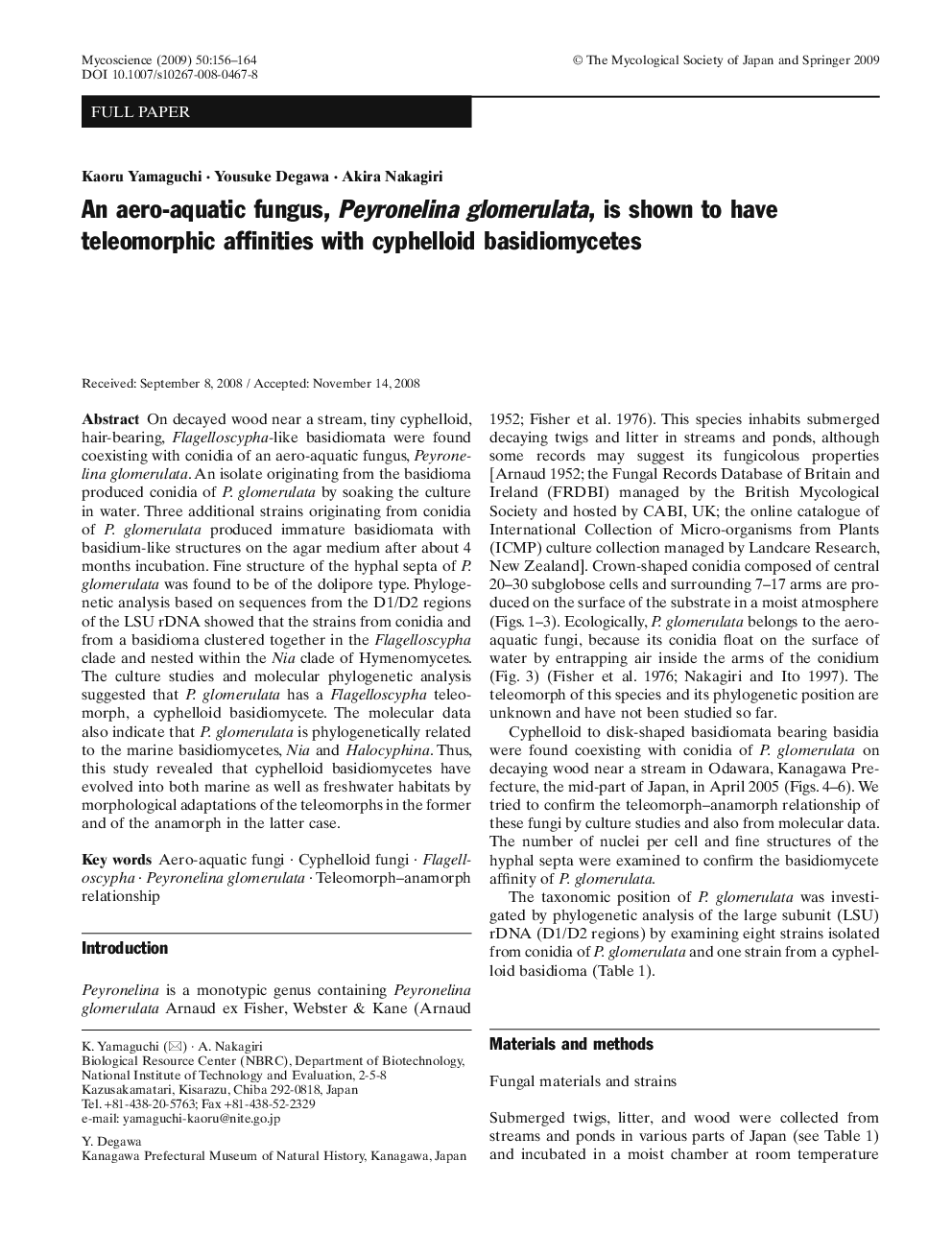| Article ID | Journal | Published Year | Pages | File Type |
|---|---|---|---|---|
| 2060558 | Mycoscience | 2009 | 9 Pages |
On decayed wood near a stream, tiny cyphelloid, hair-bearing, Flagelloscypha-like basidiomata were found coexisting with conidia of an aero-aquatic fungus, Peyronelina glomerulata. An isolate originating from the basidioma produced conidia of P. glomerulata by soaking the culture in water. Three additional strains originating from conidia of P. glomerulata produced immature basidiomata with basidium-like structures on the agar medium after about 4 months incubation. Fine structure of the hyphal septa of P. glomerulata was found to be of the dolipore type. Phylogenetic analysis based on sequences from the D1/D2 regions of the LSU rDNA showed that the strains from conidia and from a basidioma clustered together in the Flagelloscypha clade and nested within the Nia clade of Hymenomycetes. The culture studies and molecular phylogenetic analysis suggested that P. glomerulata has a Flagelloscypha teleomorph, a cyphelloid basidiomycete. The molecular data also indicate that P. glomerulata is phylogenetically related to the marine basidiomycetes, Nia and Halocyphina. Thus, this study revealed that cyphelloid basidiomycetes have evolved into both marine as well as freshwater habitats by morphological adaptations of the teleomorphs in the former and of the anamorph in the latter case.
